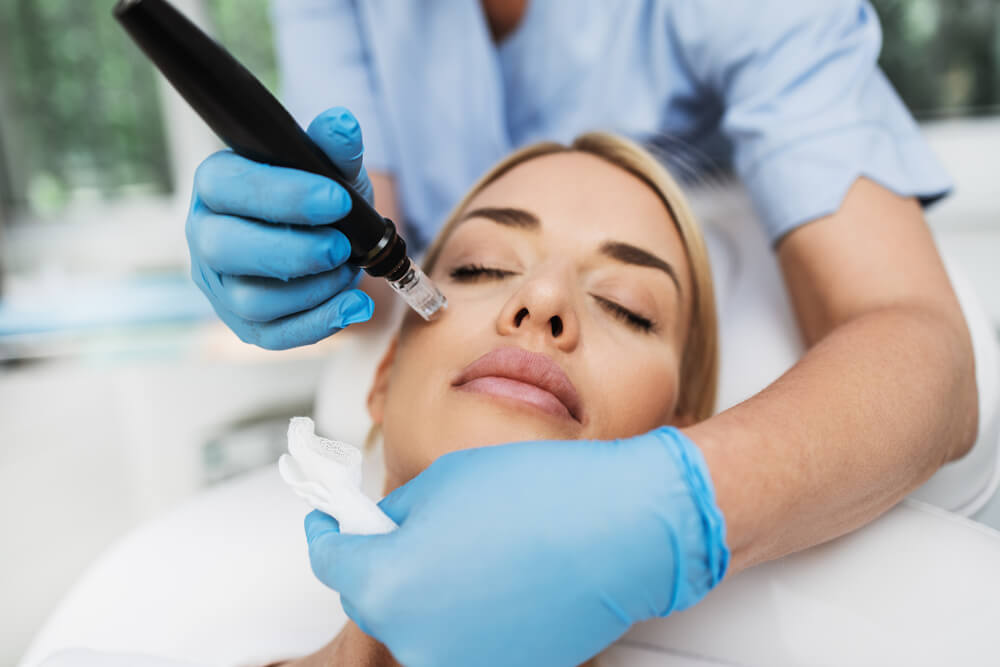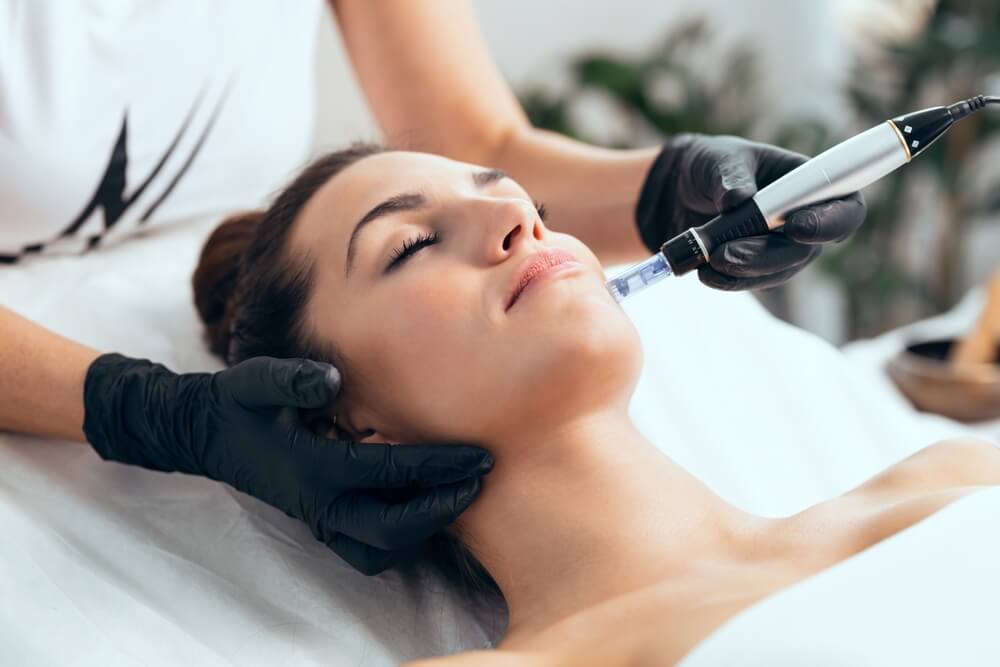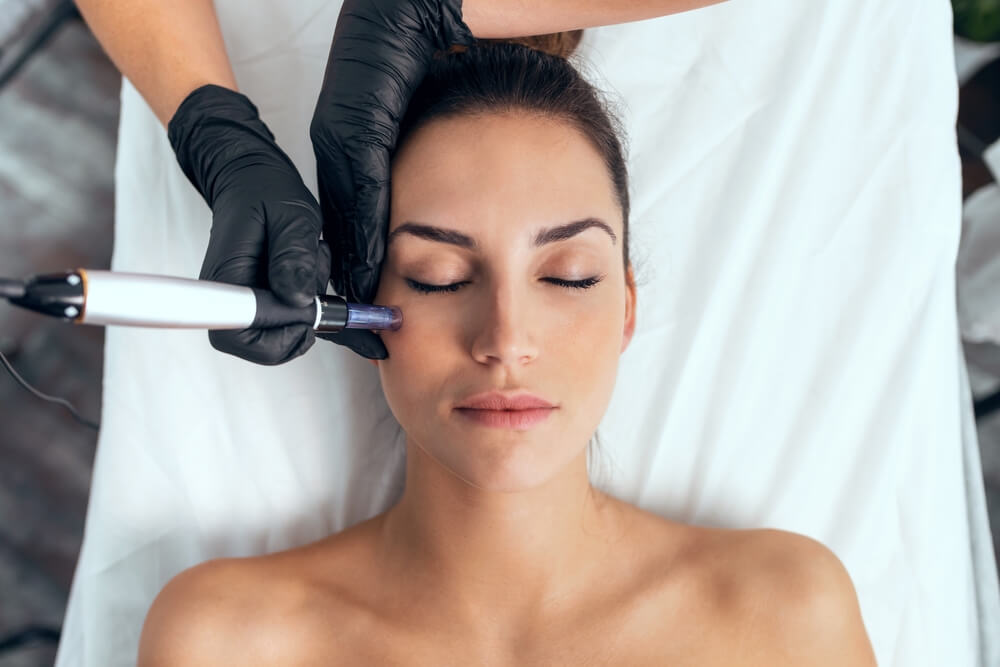People often share that treating wrinkles, acne scars, or stretch marks is nearly impossible. Although scientists have not created a permanent, 100% successful solution for the mentioned skin issues, the microneedling procedure has been deemed very efficient in battling these problems on a more permanent basis.
Microneedling is a procedure used by medical professionals who want to help their patients with the reduction of scar tissue, stretch marks, and wrinkles on their skin using a minimally invasive procedure. Most patients use this method to enhance their appearance, but the microneedling procedure has successfully treated certain medical conditions. Establishments such as the Mahima Spa Bradenton have been offering this approach to their clients for some time now, and the results have been quite impressive, as their patients share.
What Is Microneedling?

If you have been wondering what is microneedling, in today’s article, this question will be answered through a few segments. We will first explain what the procedure in itself is, what are some benefits of microneedling and potential risks, and what results you can expect if you decide to undergo this procedure.
As mentioned, microneedling is considered to be a minimally invasive procedure that can help improve particular skin conditions you might struggle with. By using thin needles, your medical provider creates tiny holes in the primary layer of your skin, creating damage that stimulates the healing process in the skin and generates a higher production of elastin and collagen, making it smoother and firmer.
Microneedling is most often used in the facial area, but patients tend to use this procedure to better the state of their skin on other body parts such as the back, legs, neck, or any other area where the person notices skin damage. Multiple treatments are needed to achieve noticeable results, but experts share that this is a very effective method for skin renewal.
People often mistake microneedling for microdermabrasion, so let’s use this article to explain the main difference shortly. While microdermabrasion only exfoliates the upper layer of the skin, microneedling goes deeper into the skin layers and works much more efficiently in resolving issues such as deep acne scars or deeper wrinkles.
When it comes to the perfect candidates for a procedure such as microneedling, there are certain criteria doctors follow when advising their patients:
- Microneedling can be used for both cosmetic but also medical purposes.
- Doctors recommend it for patients with bigger pores, fine lines, or wrinkles.
- It is recommended for people with loose skin, and mild scarring from burns or acne.
- When patients suffer from skin discoloration or issues with their skin tone, doctors recommend microneedling
- Stretch marks are also very often treated with this minimally invasive procedure.
- It is recommended for patients who struggle with alopecia areata (hair loss caused by an autoimmune disease) or hyperhidrosis (very heavy sweating)
When patients are suffering from the particular conditions or are undergoing certain treatments, microneedling is not recommended, and this can include:
- Blood disorders
- Usage of anticoagulants
- Acne or currently undergoing acne treatments
- Cancer
- Currently undergoing chemotherapy or radiation
- Skin rashes or cold sores
- Freckles, moles, or skin tags which can bleed easily or change their shape and size
- Eczema or psoriasis
The Procedure
The microneedling procedure is quite simple, and today we will try to give you some more details so you can prepare as well as possible.
Before beginning the procedure, the patient needs to consult a doctor. Either a plastic surgeon, an aesthetician, or a dermatologist will perform your microneedling treatment, but make sure they are experienced and knowledgeable when it comes to this particular technique.
Your chosen doctor will perform a skin examination, review your personal health history, and talk to you about the aims and results of the procedure. It is possible that they will also want to take photos of your skin before the procedure to monitor your progress, with your approval, of course. At this time, you can ask any questions and share your concerns and any particularities about your health the doctor might need to know.
Sometimes doctors advise patients to start putting a vitamin A or C cream on the skin before the treatment because these creams help with collagen production.
During the microneedling procedure, the doctor clears your skin and applies a cream that is meant to numb the outer layer of your skin so you feel less pain during the procedure. The medical provider usually uses either a hand-held roller or an electric pen to treat the area. Both of these tools have tiny needles which cause damage to the skin, and the only difference is that the electric pen gives the doctor the option to change the sizes of the needles and the depth of the puncture.
Different patients suffer from different skin issues, so when the damages are deeper, the needle length is bigger. The length can range from 0.5 mm to 2 mm, depending on the particular case. People tend to feel slight discomfort during the procedure, especially when the needles are put near bones, and you might experience slight bleeding. The procedure can take from 15 minutes to a couple of hours, and this is determined by your chosen provider based on the severity of your condition.
After the procedure is done, the patient is free to go home. The skin is usually very red and swollen for a few days, so doctors recommend icing the area and applying moisturizer and sun protection creams (SPF). You should avoid sun exposure and makeup application at least 48 hours after the procedure, so your skin can properly heal.
Benefits of Microneedling
There are many different benefits of microneedling, but here are some of the most common ones:
- Improvement in the appearance and texture of the skin
- Minimization of scarring, stretch marks, wrinkles
- No risk of skin discoloration
- It can be used by both light-skinned and dark-skinned persons
Risks
As this is a minimally invasive procedure, the risks are very few, including bruising, scarring, and skin infections. Doctors who are in charge of conducting the procedure are there to mitigate the risks, especially when it comes to skin infections. In general, the risks are minimal when it comes to microneedling.
Microneedling Results

Touching upon the topic of the microneedling results, they are monitored on a case-by-case basis. People are different, and their skin’s response to microneedling can be very diverse. Some people need three months, and some see results only after a year of regular treatments. It is usually recommended to do the sessions with three to eight-week rests between each treatment for better results and prevention of potential issues.
If you notice any bleeding, blisters, or swelling lasting longer than seven days, please contact your chosen medical provider and schedule an urgent consultation.
Visit Our Center!
Microneedling is a service offered by our center which has been proven successful in treating skin conditions. If you want to treat your acne scars or are tired of stretch marks and wrinkles, call our expert team and schedule a consultation. We will do our best to help you, so visit us!


